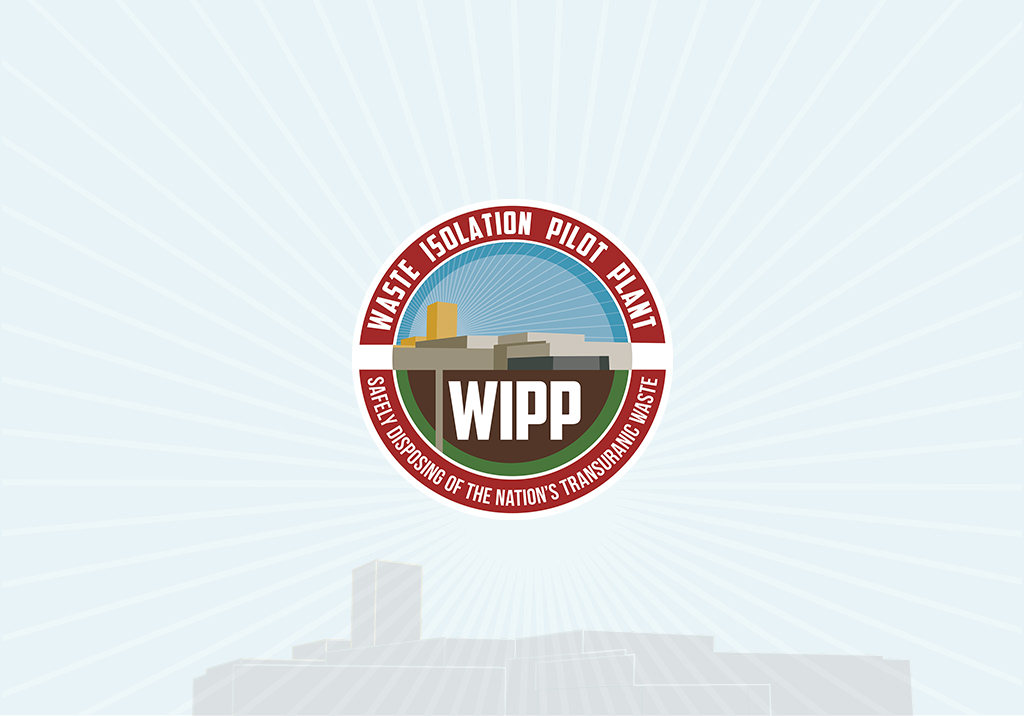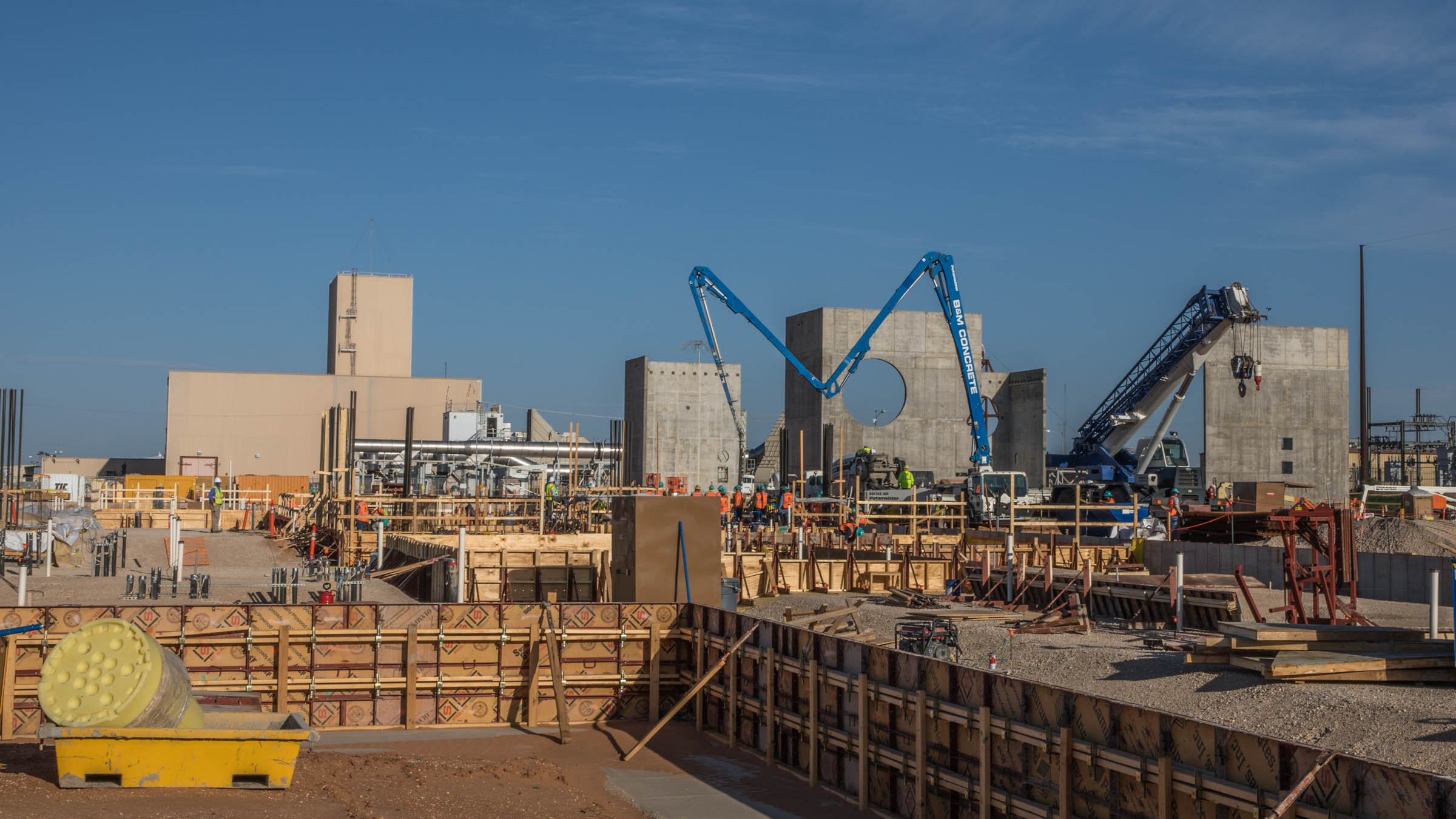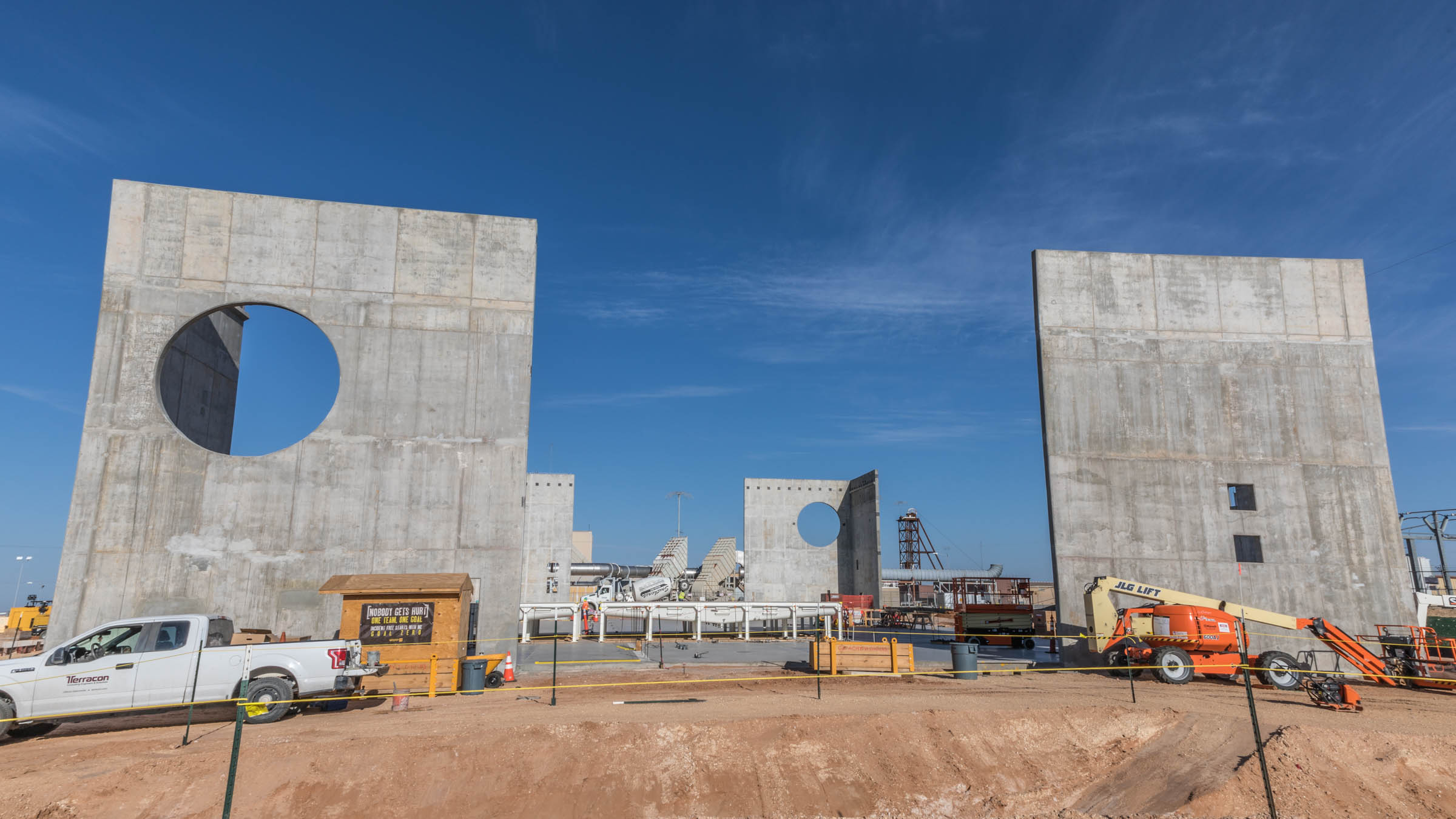
Confirmed WIPP COVID-19 Cases
June 17, 2021
Summer Interns at WIPP
June 2, 2021Looking Up – The SSCVS Update May 2021

The Safety Significant Confinement Ventilation System is rising from the desert.
The enormous, $288-million project is WIPP’s largest construction effort in three decades.
The SSCVS, the largest containment fan system among DOE facilities, will provide a modern air supply system designed to run continuously in unfiltered or HEPA filtration mode. The system will provide approximately 540,000 cubic feet per minute (cfm) of air to the underground, significantly more than the 170,000 maximum cfm provided by the current ventilation system.
The increased airflow will allow simultaneous mining, rock bolting, waste emplacement, maintenance, and experimental scientific operations. The permanent ventilation construction project is scheduled to be completed in 2025.
The SSCVS project includes two primary buildings — the Salt Reduction Building and the New Filter Building — as well as support structures, such as the fabrication building and trailers for contractors and staff involved with the immense project.
The SRB prefilters salt-laden air coming from the WIPP underground, while the NFB has fans and HEPA filtration to further remove contaminants from the exhaust air.
The Industrial Company, a Kiewit subsidiary, is the new lead contractor on the project and has been making substantial progress.
The first of 44 concrete pours on the NFB foundation, known as slab-on-grade, was done in mid-May. The concrete and rebar steel work are the first safety significant work for the SSCVS. The pours will continue through August.
Rebar coming out of the ground at the building site indicates where shear walls will be located. Precast panels will attach to the shear walls, which are load bearing.
The shear walls for the SRB, 41 feet in height, are already in place and will support prefabricated walls that are being constructed in San Antonio. Forty percent of those panels are finished at the factory. Those prefab walls will begin to go up in July, possibly even late June. Columns, beams, and side panels will be added, followed by roof panels to complete the building.

The SRB should be fully enclosed by the end of the calendar year.
The building’s salt reduction units have started to arrive. The cleansed air that will come from the SRB will head to the NFB, which will have four 1,000-horsepower fans pulling the air through HEPA filtration before exiting through a 125-foot stack.
Fifteen of the 22 HEPA filter units are stored in shrink-wrap in the fabrication building, with the remaining seven expected to arrive before the end of the fiscal year on Sept. 30.
Located in the northernmost part of the Chihuahuan Desert, WIPP doesn’t get much rainfall, but when it does, it’s in the form of massive summer thunderstorms. The underground stormwater runoff system — which includes drains, pipes, and runoff ponds — is essentially complete. Good thing, too. It was put to the test recently by heavy storms that rolled through the area.
The installation of thousands of feet of electrical conduit, running from a nearby Xcel Energy substation, has been completed and is awaiting the arrival of cable.
WIPP is gaining a new fire water system that includes storage tanks, larger mains, and an alarm system. Part of the system will loop around the SSCVS.
During the week of May 24, the entire south section of the loop will be installed at once, a huge leap toward completion of the project’s underground work.
“What we’re trying to do is get all the underground work completed in one go, so that we have the surface open,” said Steve Smith, NWP Capital and Infrastructure Project manager.
“We’re going to be bringing in a lot of trucks with all the steel, all the rebar, the precast panels, so we need to have the surface open and available.”
